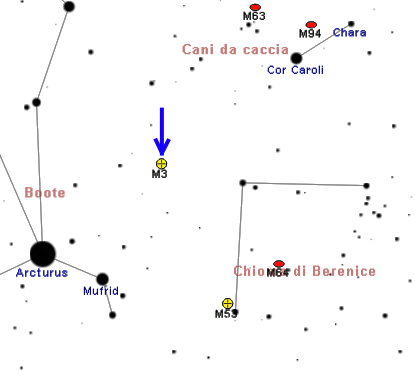The top picture is that of M3 That I took tonight with my telescope. Wikipedia states, is a globular cluster of stars in the northern constellation of Canes Venatici. It was discovered by Charles Messier on May 3, 1764,[7] and resolved into stars by William Herschel around 1784. Since then, it has become one of the best-studied globular clusters. Identification of the cluster's unusually large variable star population was begun in 1913 by American astronomer Solon Irving Bailey and new variable members continue to be identified up through 2004.
Arcturus can be used to help locate M3

Messier 3 with amateur telescope
Many amateur astronomers consider it one of the finest northern globular clusters, following only Messier 13. M3 has an apparent magnitude of 6.2, making it a difficult naked eye target even with dark conditions. With a moderate-sized telescope, the cluster is fully defined. It can be a challenge to locate through the technique of star hopping, but can be found by looking almost exactly halfway along an imaginary line connecting the bright star Arcturus to Cor Caroli. Using a telescope with a 25 cm (9.8 in) aperture, the cluster has a bright core with a diameter of about 6 arcminutes and spans a total of 12 arcminutes.
This cluster is one of the largest and brightest, and is made up of around 500,000 stars. It is estimated to be 8 billion years old. It is located at a distance of about 33,900 light-years away from Earth.
The Next Photo is that of MARS that I took. Just a fine night for star-hopping.


